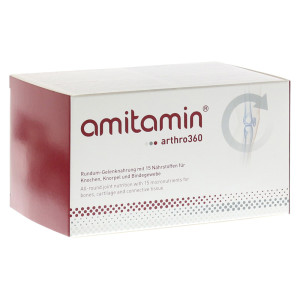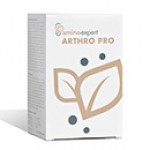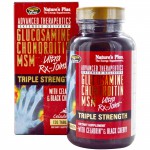arthro360, ARTHRO PRO and Ultra Rx-Joint rated top joint food supplements
 There is a lot of emphasis on food supplements for joint conditions. This has lead to an influx in products designed to help people better support joint health and reduce the symptoms of conditions such as arthritis.
There is a lot of emphasis on food supplements for joint conditions. This has lead to an influx in products designed to help people better support joint health and reduce the symptoms of conditions such as arthritis.
Understanding what joint food supplements are, which brands are the best, and which nutrients can support optimal joint health are all important consideration for anyone with joint aliments.
What are arthritis food supplements?
There are many over-the-counter-food supplements formulated to support better joint health. These include naturally occurring micro nutrients which have been shown as beneficial in combating arthritis in clinical studies. Specifically, they have been shown to
- reduce the advancement of joint degradation and help to reduce
- swelling,
- inflammation, and
- associated pain.
Why are arthro360, ARTHRO PRO and Ultra Rx-Joint the best rated?
In an analysis of 24 of the best known and widely used joint supplements in Europe, amitamin arthro360, ARTHRO PRO and Ultra Rx-Joint were rated as the most effective. The ingredients in these supplements provide optimal joint support.
Amitamin’s arthro360 provides clinically-proven effective dosages of:
- MSM
- Glucosamine
- Chondroitin
- Omega -3 fatty acids
- Pine bark extract
- L-methionine and L-cysteine
- Selenium, zinc, copper and manganese
- Vitamins E, C and D3
Aminoexpert ARTHRO PRO also contains these ingredients, with the exception of omega-3 fatty acids and vitamin D. However, the slightly higher doses of glucosamine, chondroitin and MSM mean that both these products have similar effects. Aminoexpert ARTHRO PRO also has the addition of hyaluronic acid.
Advanced Therapeutics’ Ultra Rx-Joint supplement also rated highly due to its high concentration of MSM, glucosamine, and chondroitin. This supplement has particularly high doses of manganese and vitamin C.
However, other key nutrients such as pine bark extract, omega-3 fatty acid, hyaluronic acid, SAMe, vitamin E, zinc, and copper are absent.
What nutrients should good joint food supplements include?
There are several key nutrients you should look for in any joint supplement. These nutrients assist to slow the advancement of joint degradation and help to reduce swelling, inflammation, and associated pain:
[sections] [section title=”Amino acids”]
L-methionine is an important sulphur containing amino acid that supports cartilage tissue development, contributing to joint integrity and strength. As a key component of the SAMe (S-Adenosyl methionine) cycle, this amino acid has been shown in clinical trials to help reduce pain and inflammation associated with joint problems 1,2.
L-cysteine is another key sulphur containing amino acid and is needed for the synthesis of glutathione. This is a powerful antioxidant and can help to reduce inflammation and swelling.
[/section] [section title=”Glucosamine”]
Found naturally in the joints, research confirms that this amino sugar has cartilage-building and anti-inflammatory effects when consumed over several months. It can help to reduce pain and increase mobility3.
Well tolerated with very few side effects, glucosamine also assists with the development of connective and supporting tissues. Glucosamine’s positive effects on joint health are enhance in combination with other natural compounds, in particular omega 3 fatty acids, chondroitin, and vitamin E4, 5.
[/section] [section title=”Chondroitin”]
Produced within the cartilage cells, chondroitin is one of the key joint stabilisers which serves to counteract the external pressure placed on the articular cartilage. In addition to its cartilage-building effects, chondroitin has an anti-inflammatory and analgesic effect in humans.
Although this compound has intrinsic value, combined with glucosamine this amino sugar is even more effective6,7.
[/section] [section title=”Omega-3 fatty acids”]
 Derived from fish oil docosahexanoic acid (DHA) and eicosapentaenoic acid (EHA) fatty acids have a number of protective roles within the body, including inhibiting joint inflammation. Many studies have confirmed that omega 3 fatty acids can reduce the negative symptoms of arthritis and osteoarthritis.
Derived from fish oil docosahexanoic acid (DHA) and eicosapentaenoic acid (EHA) fatty acids have a number of protective roles within the body, including inhibiting joint inflammation. Many studies have confirmed that omega 3 fatty acids can reduce the negative symptoms of arthritis and osteoarthritis.
Results from one study show that the positive effects of chondroitin and glucosamine supplementation can be enhanced by around 33 percent when taken in conjunction with omega 3 fatty acids8.
Regular omega 3 supplementation will help to diminish arthritic pain by reducing inflammation9,10. This can improve joint function and mobility.
[/section] [section title=”MSM”]
Methylsulfonylmethane (MSM) belongs to a group of organic sulphur compounds (sulphones). It has a detoxifying and pain-relieving effect. Additionally, the sulphur contained in MSM contributes to the building of cartilage tissue. Several studies have found that MSM supplementation over an extended period can enhance joint function11.
[/section] [section title=”Hyaluronic acid”]
A naturally occurring mucopolysaccharide, hyaluronic acid is found within the cartilage and joint synovial fluid. It is a key lubricator, although its availability declines with age and this makes people more vulnerable to joint inflammation.
Many studies confirm that intra-articular injections of hyaluronic acid can help to alleviate joint pain. More recently, scientist have also confirmed that oral administration of this compound can also lessen the symptoms of osteoarthritis12.
[/section] [section title=”Pine bark extract”]
 Widely used in alternative therapies, French coastal pine (pinus pinaster) has been the subject of hundreds of scientific studies. This botanical extract is enriched with antioxidants, anti-inflammatories, plus an array of important micronutrients.
Widely used in alternative therapies, French coastal pine (pinus pinaster) has been the subject of hundreds of scientific studies. This botanical extract is enriched with antioxidants, anti-inflammatories, plus an array of important micronutrients.
With no negative side effects, this is one of the most promising herbal treatments for arthritis and other joint problems. Research has shown that supplementation with pine bark extract can improve mobility, minimize pain, and reduce dependence on pain relief medications in patients suffering from osteoarthritis13,14,15, 16.
[/section] [section title=”Vitamins”]
 There are several key vitamins that are essential for healthy joints, including vitamin C, E and D. Vitamin C is an essential antioxidant and immune system enhancer, playing an important role in the treatment of arthritis and other joint aliments.
There are several key vitamins that are essential for healthy joints, including vitamin C, E and D. Vitamin C is an essential antioxidant and immune system enhancer, playing an important role in the treatment of arthritis and other joint aliments.
The antioxidant activity of vitamin E has also been shown to reduce joint inflammation, improve mobility, and provide pain relief. Research shows that the positive effects of vitamin E are enhanced in combination with other compounds such as glucosamine, chondroitin, and omega-3 fatty acids17.
Healthy bones and joints require vitamin D. This vitamin also helps to protect against inflammation, with an established correlation between low vitamin D levels and a elevated risk of arthritis18,19,20,21.
[/section] [section title=”Trace elements”]
Copper, zinc, selenium and manganese are some of the key trace elements necessary for healthy joints. These nutrients all have applications in antioxidant enzymes. When levels of these trace elements are insufficient, joint inflammation can become worse.
[/section] [/sections]
What other well-known supplements were assessed but fell-short?
In the comparison of commonly known joint supplements included several products that ranked poorly:
Jointace Collagen Formula – This supplement had low chondroitin content and lacked MSM, hyaluronic acid, omega-3 fatty acids, or amino acids.
Seven Seas Jointcare Max – This supplement had low glucosamine content, no chondroitin, MSM, hyaluronic acid, and no trace elements such as selenium or zinc.
zestlife Glucosamine & Chondroitin with Ester C & Calcium came in last in the rankings with low levels of glucosamine and chondroitin, no omega-3 fatty acids, MSM, hyaluronic acid, vitamin E, zinc or selenium.
These supplements are considered ineffective and will not help to significantly improve joint health or reduce inflammation and associated pain.
Summary
If you are going to take a joint supplement to help support good health and/or minimise the symptoms of problems such as arthritis, make sure you select a product with as many key nutrients as possible.
It’s also important to cross-reference the dosages also to ensure that you are getting the optimal amounts of these essential nutrients. Also don’t forget to do your research on forums (such as patient.info and ehealthforum), blogs and product review sites such as ciao and review-centre.
Regularly participating in low impact exercise is also very important for supporting joint mobility and easing inflammation.
References
- “Najm W., et.al. (2004). S-adenosyl methionine (SAMe) versus celecoxib for the treatment of osteoarthritis symptoms: a double-blind cross-over trial. BMC Musculoskelet Disord, Volume26, Issue 5.” ↩
- “Kim, J. et al. (2009). Comparative clinical trial of S-adenosylmethionine versus nabumetone for the treatment of knee osteoarthritis; an 8-week, multicenter, randomized, double-blind, double-dummy, Phase IV study in Korean patients. Clinical Therapy. Volume 31, Issue 12, (pp. 2860-72).” ↩
- “Clegg, D.O. et al.: “Glucosamine, chondroitin sulfate, and the two in combination for painful knee osteoarthritis.” NEJM, 2006, 354, 795-808.” ↩
- “Gruenwald et al. 2009. Effect of glucosamine sulfate with or without omega-3 fatty acids in patients with osteoarthritis. Advances in Therapy 26(9), 858-871; Haflah et al. 2009. Palm vitamin E and glucosamine sulphate in the treatment of osteoarthritis of the knee. Saudi Medical Journal 30(11), 1432-1438.” ↩
- “Chan et al. 2007. Effects of glucosamine and chondroitin sulfate on bovine cartilage explants under long-term culture conditions. American Journal of Veterinary Research 68:709–715.” ↩
- “Bruyere, O. and Reqinster, J. (2007). Glucosamine and chondroitin sulphate as therapeutic agents for knee and hip osteoarthristis. Drugs Aging, Volume 24, Issue 7, (pp. 573-80).” ↩
- Fransen, M. et.al. (2015). Glucosamine and chondroitin for knee osteoarthritis: a double-blind randomised placebo-controlled clinical trial evaluating single and combination regimens. Annuals of Rheumatic Disease, Volume 74, Issue 5, (pp. 851-8).” ↩
- “Gruenwald et al. 2009. Effect of glucosamine sulfate with or without omega-3 fatty acids in patients with osteoarthritis. Advances in Therapy 26(9), 858-871.” ↩
- “Dzielska-Olczak & Nowak. (2012). Antiinflammatory therapy in ostheoarthritis including omega 3 and omega 6 fatty acids. Polish Merkur Lekarski 32(191), 329-334.” ↩
- “Calder. (2006). n-3 Polyunsaturated fatty acids, inflammation, and inflammatory diseases. American Journal of Clinical Nutrition 83(suppl), 1505S-1519S.” ↩
- “Kim et al. 2006. Efficacy of methylsulfonylmethane (MSM) in osteoarthritis pain of the knee: a pilot clinical trial. Osteoarthritis Cartilage 14(3), 286-294.” ↩
- “Tashiro, T. et.al. (2012). Oral administration of polymer hyaluronic acid alleviates symptoms of knee osteoarthritis: A double-blind, placebo-controlled study over a 12-month period. The Scientific World Journal, Volume 2012, PMC3512263.” ↩
- “Cisar et al. (2008). Effect of pine bark extract (Pycnogenol®) on symptoms of knee osteoarthritis. Phytother Res 22, Issue 8, pp.1087-92.” ↩
- “Belcaro et al. (2008). Variations in C-reactive protein, plasma free radicals and fibrinogen values in patients with osteoarthritis treated with Pycnogenol. Redox Rep 13, Issue 6,pp 271-6.” ↩
- “Grimm T et al. (2006). Inhibition of NF-kB activation and MMP-9 secretion by plasma of human volunteers after ingestion of maritime pine bark extract (Pycnogenol®). Journal of Inflammation, Volume 3, pp. 1-15.” ↩
- Schäfer A et al. (2006). Inhibition of COX-1 and COX-2 activity by plasma of human volunteers after ingestion of French maritime pine bark extract (Pycnogenol®). Biomed & Pharmacother Volume 60, pp. 5-9.” ↩
- “Aryeian et al. (2011). Beta-carotene, vitamin E, MDA, glutathione reductase and aryl esterase activity levels in Patients with Active Rheumatoid Arthritis. Iranian J Publ Health, Volume 40, Issue 2, pp 102-109.” ↩
- “Kostoglou-Athanassiou, I. et.al. (2012). Vitamin D and rheumatoid arthritis. Therapeutic Advances in Endocrinology and Metabolism. Volume 3, Issue 6.” ↩
- “Song, G., Bae, S. and Lee. Y. (2012). Association between vitamin D intake and the risk of rheumatoid arthritis: meta-analysis. Clinical Rheumatology, Volume 31, Issue 12, pp. 1733-9.” ↩
- “Cutolo, M. et.al. (2007). Vitamin D in rheumatoid arthritis. Autoimmune Review, Volume 7, Issue 1, pp. 59-64.” ↩
- ” Zhang, F. et.al. (2014). Vitamin D deficiency is associated with progression of knee osteroarthritis. American Society for Nutrition. Volume 144, Issue 12, pp. 2002-08.” ↩










